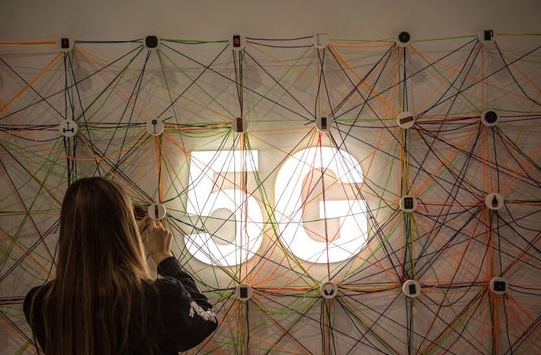
With major companies announcing new initiatives to reduce their carbon footprints and cut their environmental impacts, one key note remains unstruck – namely the vital role that next generation communications networks will play in nearly every aspect of our environmental efforts. Following our recent roundtable event in Hagerstown, Md., to discuss expanding access to broadband in rural areas, we began exploring ways in which Congress and the FCC can work together to deploy next generation networks like 5G and encourage telecommunications companies to help address climate change. With the right approach, 5G wireless communications networks could be “green networks” that unlock energy-efficient technologies to save Americans money, maintain our energy independence, and cut carbon emissions.
How, you might ask? Higher-bandwidth 5G can expand energy-saving smart technology. We’ve talked for years about the promise of smart electric grid technology. With 5G, that promise could finally come to fruition. A smart electric grid could make blackouts a thing of the past by working in real-time to diagnose issues and route power more efficiently, reducing consumers’ bills and emissions. Smart electric vehicles can charge their batteries opportunistically by following real-time supply and demand data delivered over 5G networks to lower costs. Automated smart factories can deploy 5G connected technology to reduce energy consumption while improving speed and cost-effectiveness.
Moreover, 5G technology will reduce transportation and manufacturing-related energy use through the replacement of physical goods and services with digital equivalents. More immersive telecommuting will boost flexible work and reduce the need to relocate as companies move, saving vehicle miles, fuel costs, and emissions. Similarly, more sophisticated online learning and telehealth could provide energy efficiency gains by substituting travel. Net energy usage reductions will follow. For example, the last generation of broadband access replaced CDs with more energy-efficient digital music. With higher-bandwidth technology, 5G-enabled 3D printing could reduce the need for physical manufacturing equipment or delivery.
This future also raises questions. Don’t 5G networks and the technologies they enable consume energy themselves? Of course, but this consumption can be mitigated. For one, the communications industry emits less than 2 percent of total global emissions and there is a path to prevent the industry from growing its share of emissions over time. What’s more, 5G-enabled smart technology approaches will give technologists and policymakers tools to make the industry more energy-efficient. Indeed, the FCC should drive the industry to invest in its own energy efficiency through workshops and incentives. In their own right, telecommunications companies could follow the lead of tech companies and accelerate initial steps taken on the path towards using 100 percent renewable energy.
Some may worry that the electronic replacement of physical goods and of human interaction leaves something intrinsic, tangible, and human to be desired. That is possible but, as we see it, better options for flexible work will preserve time for loved ones rather than for commuting or the office. In addition, enhanced online learning and telehealth will connect remote populations with fewer resources to new people and services. Finally, some may think the unprecedented trove of data that smart technology generates raises significant privacy and cybersecurity concerns. We agree and strongly believe that the FCC must do much more on privacy and cybersecurity as we facilitate the deployment of our next generation networks. We must proactively address these challenges in the energy context, too.
As the federal agency tasked with making wireless spectrum available for everything from wireless sensors for the Internet of Things and driverless cars, to our nationwide, next generation 5G wireless network, the FCC has a critical role to play and can do much more. To start, the FCC should measure its progress against the decade-old National Broadband Plan energy and environment recommendations and refresh them for 5G. Moreover, the FCC should form a working group with the Department of Energy, the Federal Energy Regulatory Commission and state officials to consider and advance incentives, such as the prioritizing spectrum licenses for energy-efficient smart technologies and innovative services that result in net energy efficiency gains. To reduce energy consumption, the FCC should work with the DOE and states to mandate that the communications sector invest in energy efficiency and to provide consumers more transparency into their own energy footprint online. On their own, companies should act now to pair energy efficiency initiatives with 5G infrastructure rollouts, using mechanisms such as green bonds to fund their investments. Congress could also accelerate growth of clean energy markets through the passage of the Green Bank Act, incentivizing resiliency investments to help 5G infrastructure evolve as green networks. As a member of the U.S. Senate and an FCC commissioner, we will work to advance these efforts.
As other nations, like China, work rapidly to deploy 5G technology, we must act to “win the race” to 5G in a manner that promotes energy efficiency. It is time to turn our next generation communications infrastructure into “green networks” that benefit our environment, our national security, and our pocketbooks.